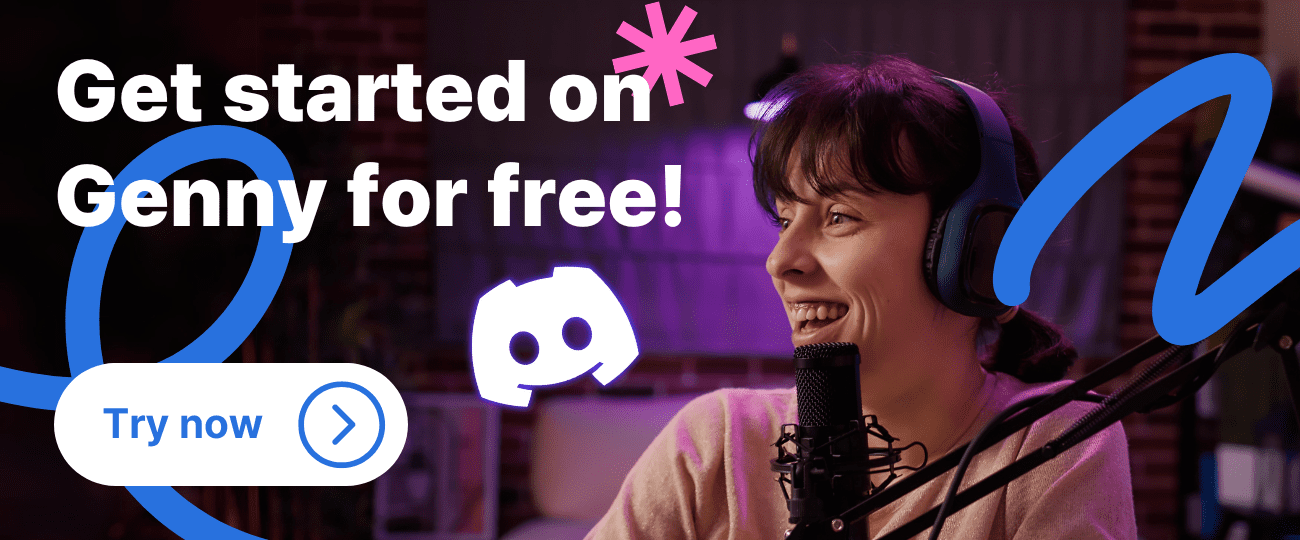
The recent explosion of artificial intelligence (AI) has revolutionized numerous industries — and content creation is no exception. AI tools have rapidly evolved for generating, enhancing, and optimizing various forms of content, including text, images, audio, and video.
Leveraging these new tools, content creators can now produce high-quality content at a fraction of the cost and more rapidly than ever before. As AI continues to advance, its role in content creation will likely expand, offering even more tools and opportunities for content creators to innovate and connect with their audiences.
With this in mind, we’ve put together a comprehensive guide on all the best AI tools available for content creators today. Whatever type of content you’re looking to make, using AI is likely to help your efforts in some way.
Read on to find the perfect tool for you!
What is AI?
Before we jump into the guide, let’s briefly touch on what we mean by AI.
In short, AI is a cutting-edge field of computer science that focuses on creating systems and machines capable of performing tasks that typically require human intelligence. These tasks include learning, reasoning, problem-solving, and language understanding. AI systems aim to mimic human cognitive functions and adapt to new situations, making them versatile tools with a wide range of applications.
At its core, AI relies on data and algorithms to make informed decisions and predictions. Machine learning, a subset of AI, allows systems to improve their performance over time by analyzing data patterns and adjusting their behavior accordingly. Deep learning, a specialized form of machine learning, employs artificial neural networks that resemble the human brain to tackle complex tasks, such as image and speech recognition.
As AI continues to evolve, its potential remains virtually limitless, offering solutions to challenges and opportunities across diverse sectors. However, ethical considerations and responsible AI development are crucial to ensure that these technologies benefit society while mitigating potential risks and biases.
It is also important to note that while AI has tremendous potential in content creation, human creativity and judgment remain irreplaceable. AI can assist and streamline processes, but it cannot replace the unique perspectives, emotions, and storytelling abilities of human content creators. Successful content strategies often involve a harmonious blend of AI-driven automation and human creativity, ensuring that the content produced resonates with audiences on a deeper level.
With that out of the way, now let’s look at the best AI tools for content creators. We have split this guide into sections, covering different types of content and the respective platforms.
AI writing tools
ChatGPT
When we’re talking about AI writing tools, ChatGPT seems the obvious place to start. Much of the recent interest in AI is due to the newest version of ChatGPT, which upon its release, gave consumers their first taste of how powerful AI can be in the content creation process.
ChatGPT is a language model that allows users to generate high-quality text based on a simple prompt. It can be used to create content, assist with the ideation process, write code, and many other things. All users need to do is input their prompt and allow ChatGPT to do the rest.
With both free and paid versions, ChatGPT is the perfect “jack of all trades” tool for assisting in the creation process of all kinds of written content.
It is important to note that ChatGPT, like many language models, does not have access to the internet and therefore cannot use real-time information in its output. This may lead to some information being inaccurate.
Writesonic
Another jack of all trades tool but in a different way to ChatGPT. Writesonic not only allows users to create written content but also has the capability to create audio, images, and AI-driven chatbots.
Just focusing on the writing side of things, Writesonic is the ideal tool for creating SEO-optimized content for ranking on Google. This tool provides creators with many customization options to fine-tune content to their specific needs. This includes tweaking the tone of voice, adding keywords to include, and defining the purpose of the piece to allow for better optimization.
Again, Writesonic has both free and paid versions.
Jasper
Jasper is currently the best tool on the market for users looking to create business-focused written content. It caters to the needs of larger-scale business enterprises that need to create large amounts of content quickly and at scale.
Using this tool, users can select and tweak their perfect brand voice, translate their work into over 30 different languages, and even create art assets to support their written content. It also has a number of integrations, including a Chrome extension, to assist with the creation process at scale.
Being an enterprise-focused tool, it only has paid versions, starting at $39/month. However, it does have the option to try the tool for free before you commit to a payment plan.
AI art tools
Adobe Firefly
Despite still being in beta, Adobe Firefly is one of the best AI art generators currently available on the market. Firefly supports text-to-image content creation, allowing users to input simple text prompts in over 100 different languages to generate AI imagery.
The thing that sets Adobe Firefly apart from other platforms is that it is part of the Adobe Creative Cloud. This means that generated assets can be easily integrated into any Adobe product, such as Photoshop, streamlining the content creation process. It also has many easy-to-use editing tools and customization options for tweaking your art.
Additionally, Adobe has added some AI features to its Creative Cloud Products, with generative fill in Photoshop giving users the ability to leverage AI to fill out images and produce content more efficiently.
Adobe Firefly has both free and premium versions but it does require a Creative Cloud subscription.
Midjourney
Midjourney is the perfect tool for users looking to create photorealistic AI art assets. The Midjourney platform has seen many recent innovations and improvements, catapulting it to the top of the rankings of AI art generators.
The double-edged sword of Midjourney is that it uses the Discord platform. Users must provide their prompts to the Discord chatbot, which will then produce the assets. However, these prompts and assets are then all public, although there is a private version available at a higher price point.
While this promotes a collaborative culture where users can learn from the successes and mistakes of one another, unless you are paying the top price, there is no option to keep your prompts and assets private.
Unfortunately, there is no longer a free version of Midjourney, with subscriptions starting at $8/month.
DALL-E 2
Created by Open AI, the company behind ChatGPT, DALL-E 2 was one of the first image generators to hit the mainstream in much the same way ChatGPT was for writing. Like ChatGPT, DALL-E is the best tool for those just starting out in the AI art generation space.
The UI is clean and easy to use, and DALL-E can create assets in many different styles with the help of robust customization options. However, it does not have the deep level of customization that some of the other platforms have, making it more suited for beginners and hobby users.
DALL-E 2 does have a free version, although the free credits that are available each month do not allow for many images to be generated.
AI video tools
Pictory
Pictory is one of the most beginner-friendly AI video generators available and can be used to great effect by people who have no video production or editing experience. It also runs on the cloud, meaning that it can be used on any kind of computer.
Pictory is aimed at content marketers, sporting tools that allow blog posts and scripts to be quickly and easily transformed into video. It can also be used to create highlight reels, ideal for producing trailers or teasers for larger pieces of work.
Pictory is a paid tool starting at $19/month, although it does have a free trial available.
Synthesys
On the other end of the AI video tool spectrum is Synthesys. This platform is the best choice for those looking to create professional-grade video assets for commercial purposes.
Synthesys allows users to create video content with voiceovers and avatars, which makes it perfect for making things like product explainers and tutorials. Its text-to-video technology means that it is simple to create high-quality video efficiently and at scale, with a large library of voices and avatars to choose from.
Synthesys is a paid service with multiple different tiers of subscription, as well as a free trial.
Synthesia
Synthesia is used by some of the largest brands in the world like Nike, the BBC, and Google to create video content using AI avatars.
It has a huge library of AI avatars, support for over 60 languages, multiple templates, a screen recorder, and a media library. Leveraging the library of avatars, voices, and templates allows users to rapidly generate professional-grade voiceover videos, perfect for showcasing products and producing video tutorials. You can also add your own brand assets and unique avatars.
There are two payment options, starting at $17.25/month.
AI audio tools
MusicML
MusicML is Google’s experimental text-to-music tool that turns your ideas into music. Based on your text prompt, it will generate music in a variety of genres and styles.
You can access MusicML by downloading Google AI Test Kitchen Apps, and then you can start creating your music. When you generate your music, it will provide you with two different versions to pick from if you are a creator who struggles to find the right music for your content. One thing to be aware of is that while it is still relatively new, it has been noted that it has featured around 1% of existing music in its generations.
MusicML is free to use and available on both iOS and Android.
Kits.AI
When it comes to AI music platforms, there aren’t many better than Kits.AI. The platform uses voice-to-voice software to allow artists to upload clips of their own singing to train AI voices for licensing out to other musicians.
Kits.AI also offers a library of royalty-free synthetic singing voices for musicians to use while retaining 100% of the copyright. To note here though, any tracks created on the platform are strictly for personal use unless approved by the artist for commercial release and with the correct royalty split.
Kits.AI is still in beta and has both free and paid versions, with the paid options starting at $9.99/month.
LOVO AI
LOVO AI’s Genny is our pick for the best AI audio tool currently available. With a gigantic library of over 500 voices in over 100 languages, LOVO is used by some of the most recognisable brands in the world to create high-quality AI audio tracks.
LOVO supports TTS with robust customization options, includes an online video editor, and can help generate video scripts with its AI writing tool. There is also voice cloning to create your very own custom AI voice or clone the voice of someone else such as a celebrity. Additionally, LOVO can also generate AI imagery to use alongside your audio tracks.
LOVO is easy to use but with market-leading customization options that make it the perfect choice for beginners and professionals alike. Users can choose from a range of emotions, tweak the pronunciation and emphasis, and create tracks with multiple speakers allowing for audio to be fine-tuned to the exact specifications required.
Best of all, LOVO has a fully free version as well as paid subscriptions starting at $24/month.
Hopefully, this guide has given you all of the information you need to start creating content with the help of AI. AI is here to stay, so make sure you are using the best tools available to make this exciting new technology work for you.
Get in touch with LOVO today to find out more about Genny and start creating your own AI voiceovers and audio tracks!



